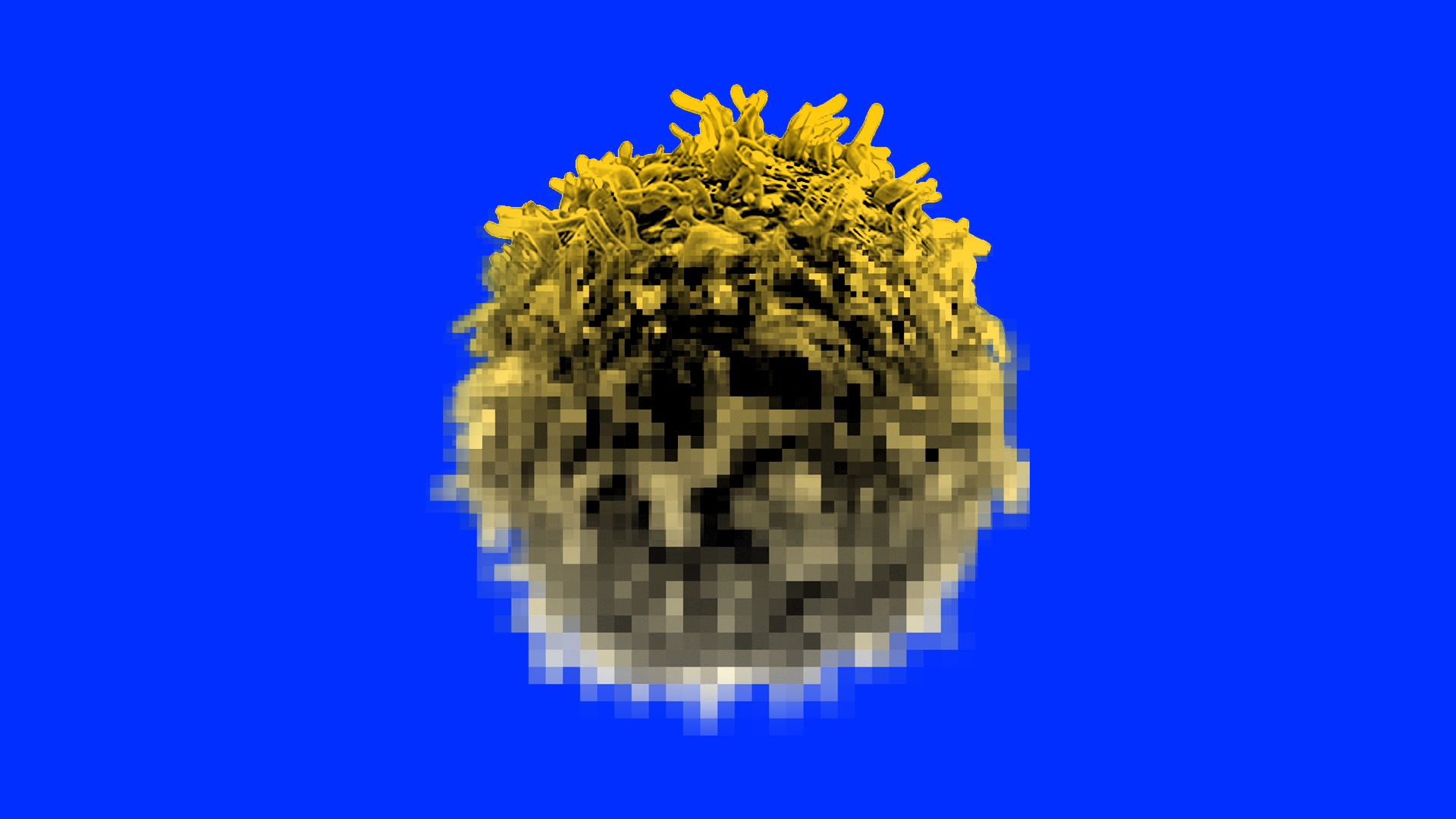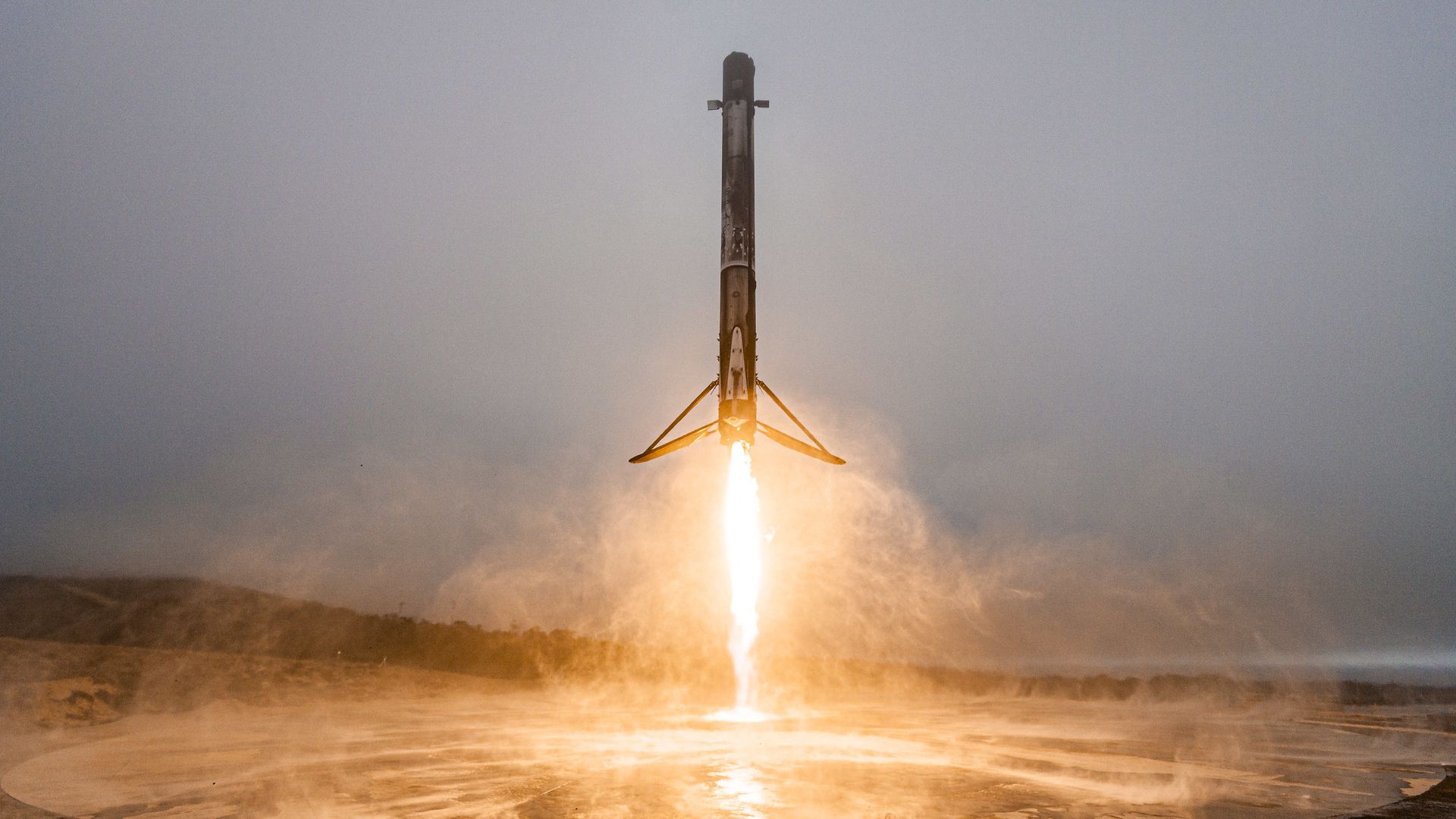| | | | | | | | | | | Axios Space | | By Miriam Kramer · Jun 21, 2022 | | Thanks for reading Axios Space. At 1,325 words, this newsletter is about a 5-minute read. - Please send your tips, questions and space viruses to miriam.kramer@axios.com, or if you received this as an email, just hit reply.
| | | | | | 1 big thing: Epidemiologists look up |  | | | Illustration: Allie Carl/Axios | | | | Scientists are tracking diseases from space and getting a new view of human health. Why it matters: The proliferation of easy-to-use, relatively cheap and more comprehensive satellite data is allowing researchers to get a holistic view of what's happening on Earth during disease outbreaks and possibly learn how to predict the next one. How it works: By keeping an eye from above on changes to vegetation and other ecosystem factors that can lead to outbreaks, researchers are starting to piece together correlations between habitat loss and urbanization, among other factors, and infectious disease. - For example, a study published in 2010, used remote sensing data to find that a major predictor of monkeypox cases in humans was the proximity of people to dense forests and habitats where rope squirrels that can carry the virus lived.
- If those areas are closely monitored, it could help people on the ground figure out which areas are at the highest risk for infection.
- Habitat loss particularly impacts predators, leaving a plethora of infected prey that could circulate the disease or transmit it to other species.
- Remote sensing can be used "to measure how much habitat we are losing, at what speed, in which direction and in which area," Luis Escobar, an assistant professor at Virginia Tech, told Axios.
What to watch: Space data could one day be used to aid in a range of public health responses to certain diseases — from monitoring to mitigation. - If health officials on the ground know when there's a high risk for a given outbreak, then they can put measures in place to help prevent it, according to Farhan Asrar, a clinician and researcher at the University of Toronto.
- "Once things happen, can we use those [satellite] images to prepare an ideal situation to set up offices and support facilities," Asrar said.
Where it stands: Satellites have already been used to learn more about the source of the Ebola virus, track an outbreak of Rift Valley fever and aid in the response to Zika. - During the early months of the COVID-19 pandemic, satellite companies like Planet were able to track economic impacts of the virus from orbit, keeping an eye on empty parking lots and traffic.
- NASA also joined other space agencies to create a COVID-19 dashboard, making relevant information gathered from satellites easily available to the public and epidemiologists.
But, but, but: While this type of research holds promise, it's still in the relatively early academic phase. - The scientists working with the remote sensing data and epidemiologists aren't yet collaborating with each other, making it hard to find the right applications for this kind of data and research.
- "We don't see strong collaboration between experts in geospatial analysis and epidemiology and remote sensing processing or generation of this data," Escobar said. "So I guess that's the first step."
- At the moment, the data isn't as accessible and available as it needs to be in order to have robust and frequent collaborations across specialties, and training is needed in order to make use of remote sensing data, Escobar added.
The bottom line: By understanding patterns seen from orbit, scientists could one day be able to predict where outbreaks will occur before they happen. |     | | | | | | 2. From mapping galaxies to mapping cancer |  | | | Illustration: Rebecca Zisser / Axios | | | | A tool used to analyze cancerous tumors based on algorithms built to map distant galaxies is getting a major influx of funding, I write with my colleague Alison Snyder. Why it matters: The platform — called AstroPath — is able to pinpoint how certain tumor cells interact with the body's tissues, allowing doctors to potentially learn more about who might respond well to various treatments. What's happening: The Mark Foundation and the Bloomberg~Kimmel Institute for Cancer Immunotherapy are giving $10 million to Johns Hopkins University's Mark Foundation Center for Advanced Genomics and Imaging to advance its work with AstroPath and other cancer research. - Scientists can use the tool to help figure out how cancers may respond to certain immune system-focused therapies by gathering data on the immune cells interacting with a tumor.
- This approach allows scientists to gather more information about whether a given treatment will be successful for a patient.
What they're saying: "They've demonstrated proof of principle with some initial funding from us, and now this expansion in funding from us will enable them to scale it and really show that it can work for thousands of tumor tissues," Ryan Schoenfeld, CEO of the Mark Foundation, told me. - Researchers working with AstroPath are also planning to make databases of their information publicly available, allowing researchers to collaborate and possibly find new treatments.
Background: Algorithms used for AstroPath were originally developed for the Sloan Digital Sky Survey, which has produced some of the most detailed maps of the cosmos ever created, showing how various galaxies are positioned in relation to one another. - The fact that Sloan's algorithms were built to map spatial interactions between galaxies meant that they could also be applied to mapping cancer cells.
- "Basically, the interaction between the tumor cells and the immune system are spatial," cosmologist Alexander Szalay, who helped develop AstroPath, told me. "So there is really a physical interaction between those cells."
|     | | | | | | 3. SpaceX's up and down week |  | | | A Falcon 9 rocket coming in for a landing. Photo: SpaceX | | | | SpaceX launched three rockets in about 36 hours after a week marked by leaks that revealed some of the company's employees are increasingly unhappy with CEO Elon Musk's behavior. Why it matters: SpaceX is arguably the most important rocket company operating today, but its triumphs on the launch pad wouldn't be possible without the company's workforce. Catch up quick: SpaceX employees drafted an open letter — first reported by Loren Grush at The Verge on Thursday — criticizing Musk's public conduct and asking the company to "publicly address and condemn Elon's harmful Twitter behavior" among other requests. - Just a day later, the New York Times reported employees involved with the drafting of the letter had been fired, with company president Gwynne Shotwell calling the letter "overreaching activism" in an email.
- That same day, SpaceX launched 53 Starlink satellites from Florida. On Saturday, the company launched a satellite to orbit for Germany from California. The company closed out the trio of launches Sunday by sending a communications satellite to space from Florida.
The big picture: SpaceX has recently faced criticism for the culture of its workplace, an issue the writers of the letter called out specifically in the leaked draft. - A former employee at the company went public last year with her experiences of being sexually harassed at SpaceX.
- Insider reported earlier this year that SpaceX paid a flight attendant working on a company plane $250,000 after Musk sexually harassed her. Musk denies those allegations.
- Jeff Bezos' Blue Origin has also come under fire recently for its "toxic culture" and alleged mishandling of sexual harassment claims.
|     | | | | | | A message from Axios | | Win the race for (remote) talent | | |  | | | | Axios has job boards to recruit top talent for your remote and local job opportunities. Reach smart professionals that visit Axios daily to make decisions about where to work, what to do and where to live. Post your job opening on Axios. | | | | | | 4. Out of this world reading list |  | | | NASA's Space Launch System rocket. Photo: NASA/Ben Smegelsky | | | | NASA's Artemis 1 Moon rocket passes crucial fueling test despite leak (Josh Dinner, Space.com) South Korean rocket puts satellites in orbit for the first time in second flight (Park Si-soo, SpaceNews) Record-breaking Voyager spacecraft begin to power down (Tim Folger, Scientific American) Arizona wildfire threatens national observatory (Rebecca Falconer, Axios) |     | | | | | | 5. Weekly dose of awe: A webby nebula |  | | | Photo: ESO, ALMA (ESO/NAOJ/NRAO)/Wong et al., ESO/M.-R. Cioni/VISTA Magellanic Cloud survey. Acknowledgment: Cambridge Astronomical Survey Unit | | | | The tendrils of the Tarantula nebula stretch out into space 170,000 light-years from Earth within the Large Magellanic Cloud. - By studying this photo and others like it, scientists are working to piece together more of the details of how stars form.
- The background, infrared image was taken by the European Southern Observatory's Very Large Telescope and Visible and Infrared Survey Telescope for Astronomy, revealing bright stars and hot gas.
- The red and yellow streaks show cold gas that could collapse into stars, according to the ESO, and were captured by radio observations made by ALMA.
|     | | | | | | A message from Axios | | Win the race for (remote) talent | | |  | | | | Axios has job boards to recruit top talent for your remote and local job opportunities. Reach smart professionals that visit Axios daily to make decisions about where to work, what to do and where to live. Post your job opening on Axios. | | | | Big thanks to Alison Snyder, Laurin-Whitney Gottbrath and Sheryl Miller for editing this week's edition. If this newsletter was forwarded to you, subscribe. 🦠 |  | It's called Smart Brevity®. Over 200 orgs use it — in a tool called Axios HQ — to drive productivity with clearer workplace communications. | | | | | | Axios thanks our partners for supporting our newsletters. If you're interested in advertising, learn more here.
Sponsorship has no influence on editorial content. Axios, 3100 Clarendon Blvd, Suite 1300, Arlington VA 22201 | | | You received this email because you signed up for newsletters from Axios.
Change your preferences or unsubscribe here. | | | Was this email forwarded to you?
Sign up now to get Axios in your inbox. | | | | Follow Axios on social media:    | | | | | |
No comments